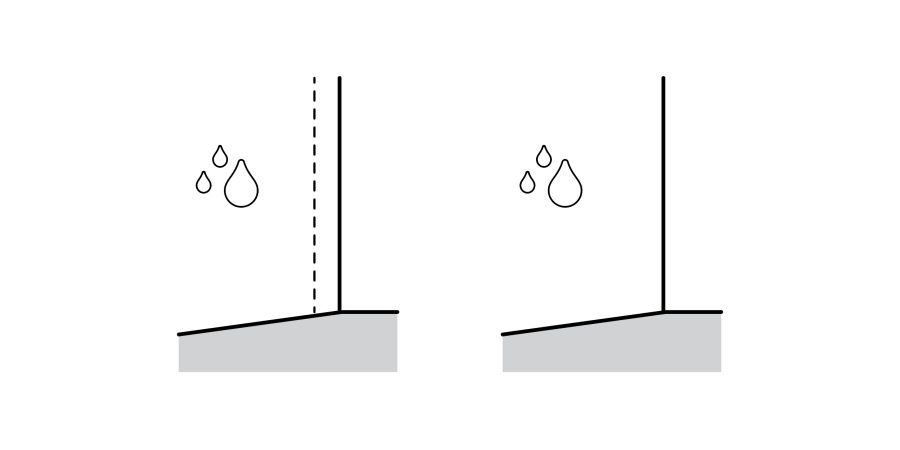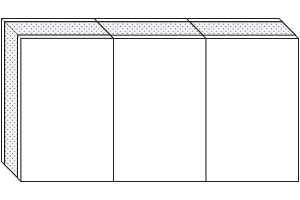Introduction
Exterior wall assemblies are designed in limitless ways, with immeasurable different amounts of materials. However, all of these assemblies generally conform to one of two different strategies to prevent water from getting into the building; the barrier concept, and rainscreen system.
Historically, the barrier strategy was the only real way to prevent water infiltration. However, over the years the rain screen system has been developed which provides better performance and reliability, especially over time. Some systems and technologies, which may have previously been implemented as a barrier, have been further advanced and designed to now be rain screen systems.
Barrier Concept
Strategy that all exterior surfaces should be completely sealed to stop any water from penetrating. The barrier against water intrusion is the exterior wall itself.
Problems and Issues
This historically has caused a lot of issues because inevitably, the barrier (wall) would crack, seals break down, or some other opening would occur in some way. The barrier system is designed to not let any water in at all; so when water ends up getting past the barrier, the water/moisture has no way to navigate ‘back out’ from behind the wall. This ends up causing damage.
In theory this means that the wall needs to be built ‘perfectly’ (and stay perfect) for it to function without any issues. However, even when a wall is built perfectly, the exterior elements will wreak havoc over time, such as thermal expansion/contraction, UV breakdown, and other numerous issues exterior materials have to consistently resist. This means that the barrier system will always eventually fail.
Examples
Exterior Insulation and Finish System (EIFS) was a very common barrier system that gained prevalence for its cheap cost and quick installation. The exterior wall itself was quite soft and could be punctured by animals and objects like tree limbs making it very susceptible to failure.
- EIFS manufacturers have now incorporated secondary barriers and adjusted the design of the system to include a rainscreen type of application/technology to combat this and still make EIFS a cheap choice for siding today.
Rain Screen System
A rain screen system accepts the fact that an exterior wall system is never going to keep 100% of water from getting in, regardless of design and quality of execution. Instead, the exposed surface provides the vast majority of protection from the elements, but is used in conjunction with an air space and watertight membrane behind it.
The air space itself is vented to the outside so that the pressure is equalized in order to prevent movement of water caused by pressure differentials due to wind or other weather conditions. This means that any little moisture which penetrates the exterior exposed surface, still has another layer to pass in order to cause damage to the building. The air space allows that water, in conjunction with flashing and vents to be drained safely to the bottom where it can escape. The next benefit of the system is that the ‘rain screen’ itself provides UV and element protection to the membrane behind it. Meaning that the membrane will not break down or corrode.
2 Types
Drained & Back-Vented
A drained and back-ventilated facade, also known as a drained and back-ventilated rainscreen (D/BV) system, is a technique that uses gravity and air pressure differentials to drain and ventilate behind the cladding of a wall. The system has openings at the top and bottom of the wall to allow air to move, and drains most rainwater at the wall’s outermost surface (90%+). The remaining water that gets into the cavity will drain out the bottom and/or evaporate.
Pressure Equalized (PE)
The air cavity is vented enough to equalize the pressure on both sides of the exterior cladding. This reduces the amount of wind-driven water into the cavity and onto the drainage plane. The air cavity behind the exterior wall is subdivided into compartments that help equalize and distribute pressure more. This system is considered to be the most effective building envelope against wind-blown rain penetration.




Leave a Reply
You must be logged in to post a comment.